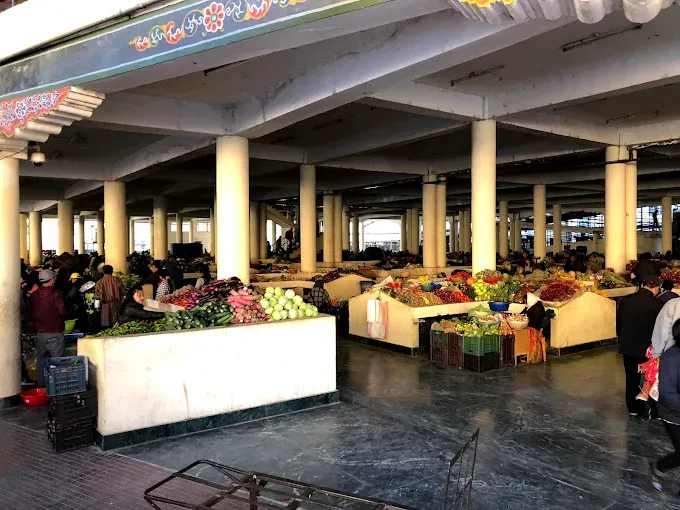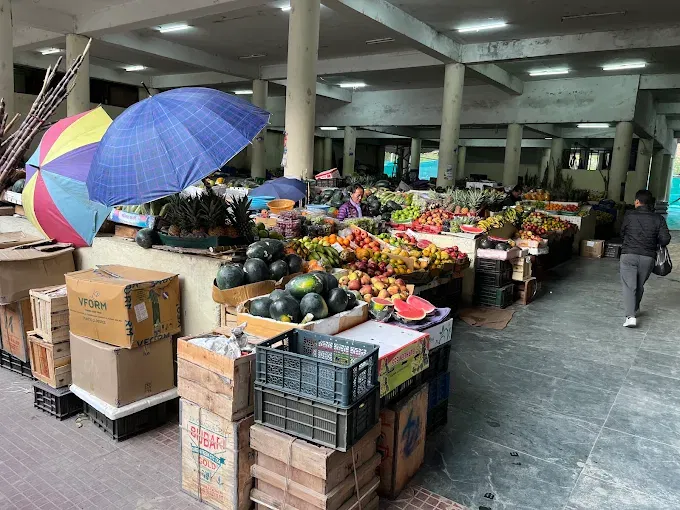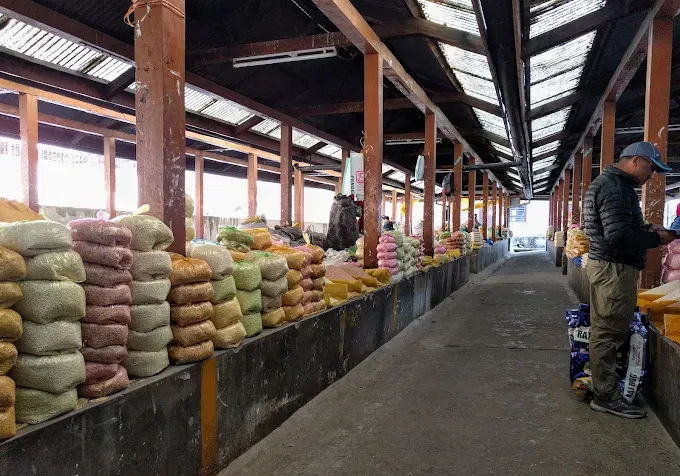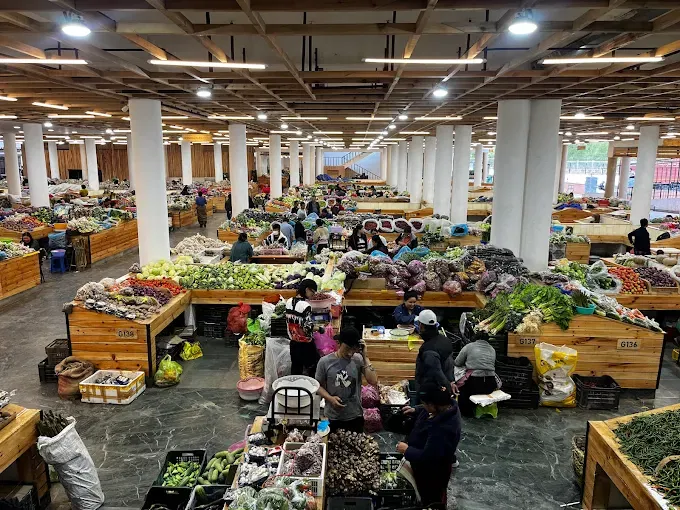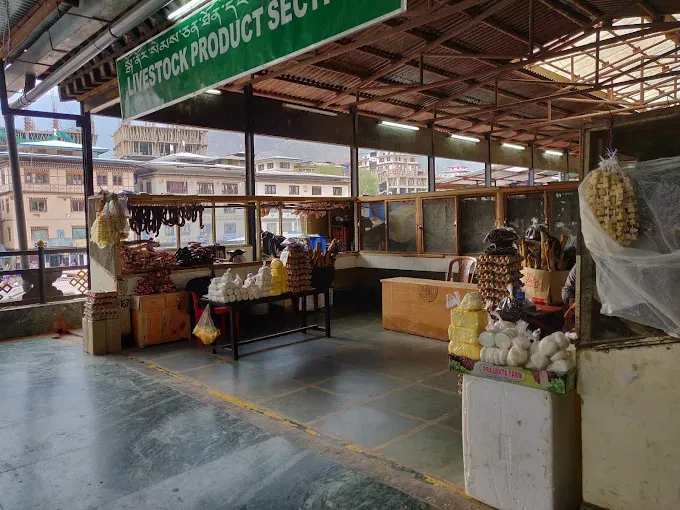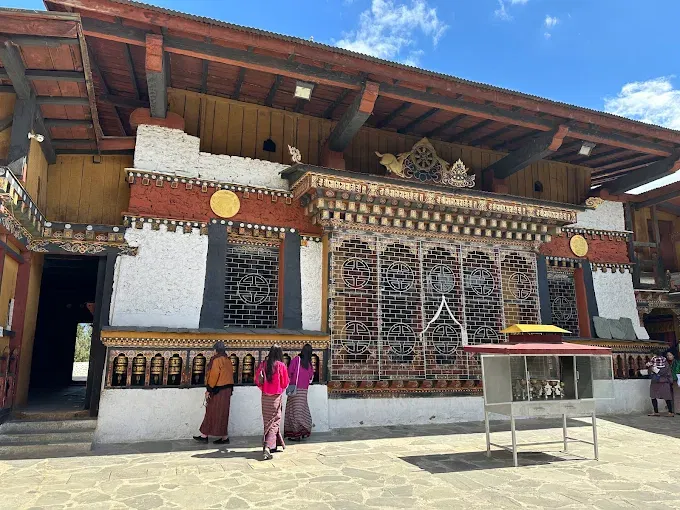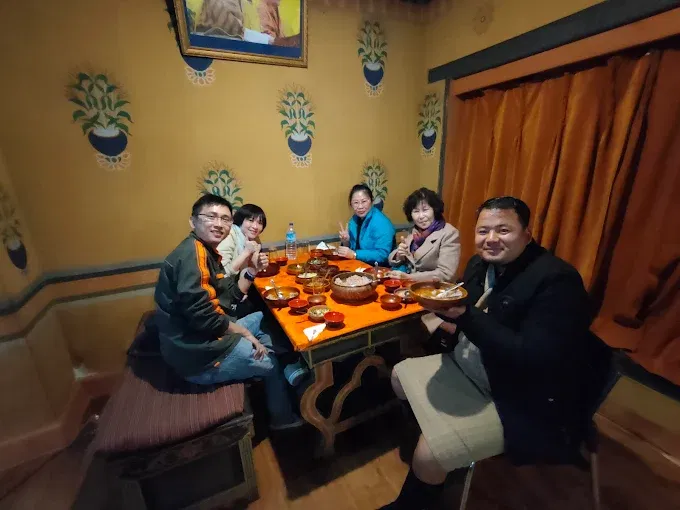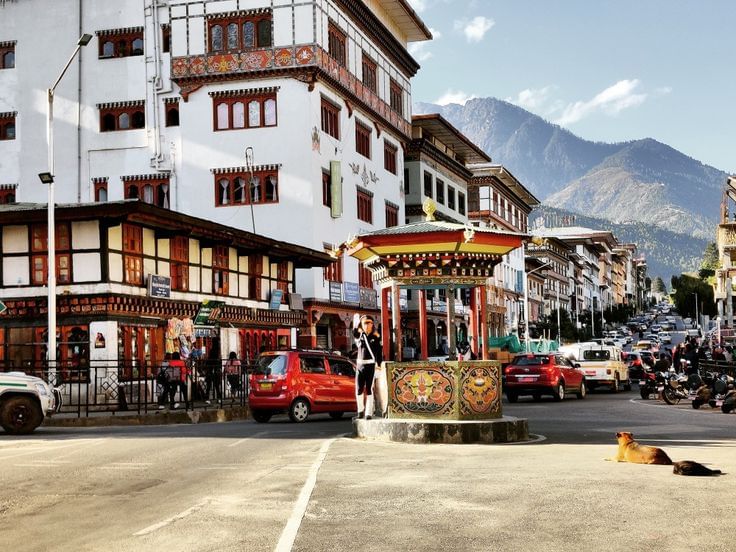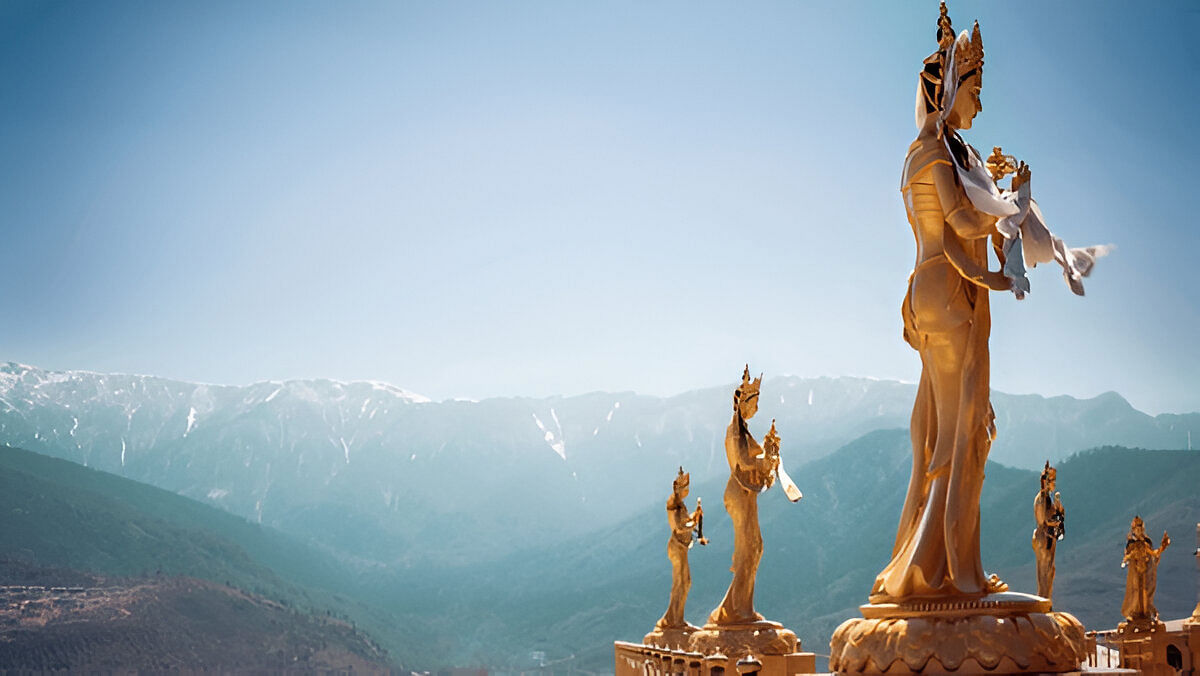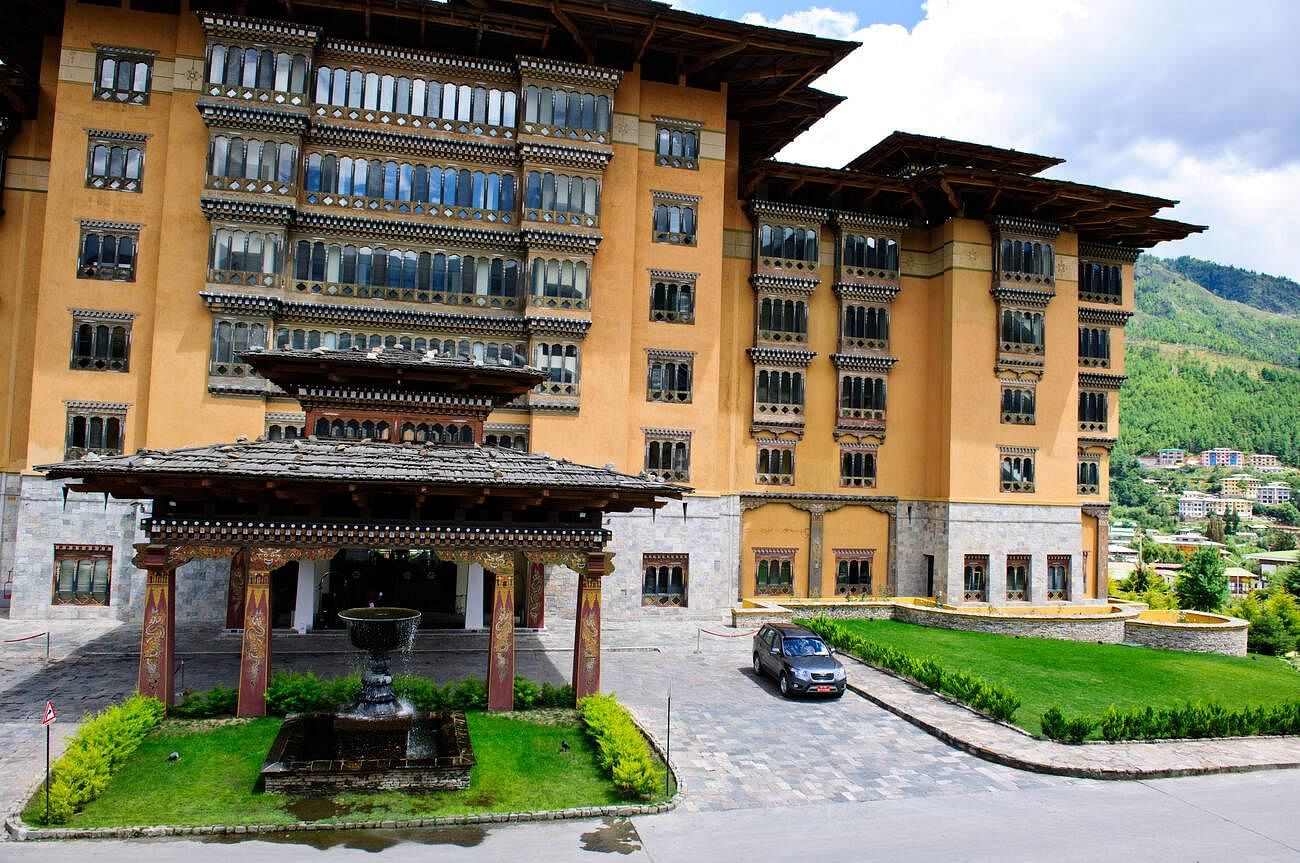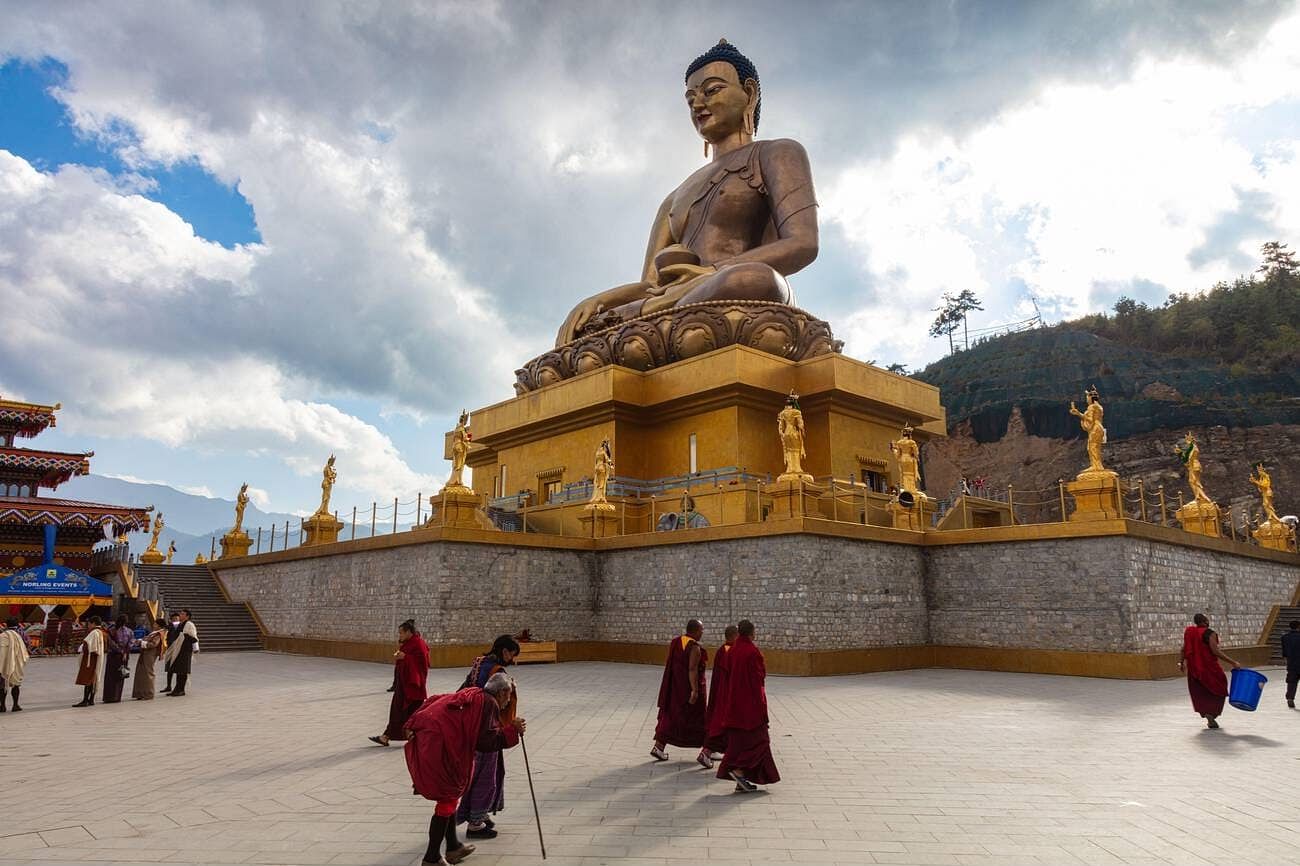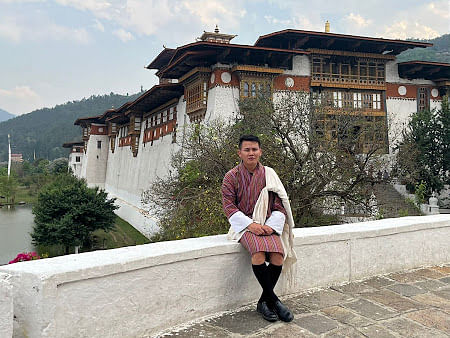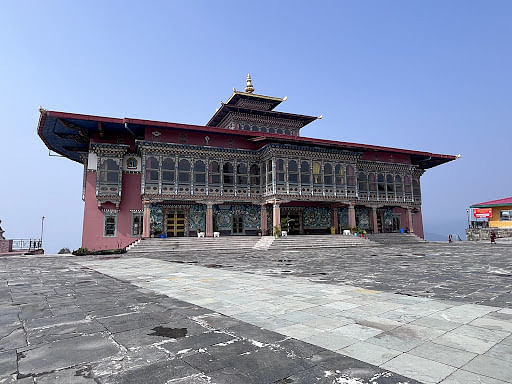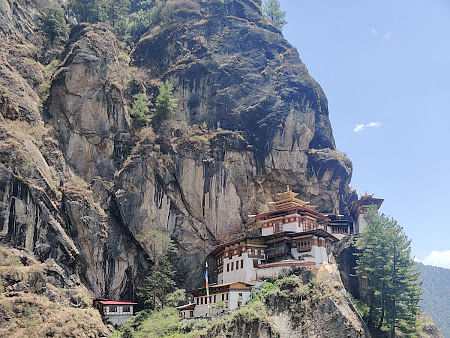The Centenary Farmers Market is where half of Thimphu shows up on weekends to buy their groceries. It's one of those places to visit in Bhutan that actually matters to regular people, not just tourists.
The place is a mess, honestly. Vendors squeeze their stalls wherever they fit, mud gets tracked everywhere when it rains, and good luck finding anything specific without asking three different people. But somehow that's what makes it work.
You'll see the same chilli lady every week, arguing with customers about prices like they're old friends. Which they probably are. The vegetable quality is hit or miss - sometimes you get perfect carrots, sometimes they look like they've been sitting around too long. That's just how it goes.
Don't expect anything fancy or organised. This isn't some sanitised tourist attraction - it's where people actually shop. The vendors work hard, the prices are fair, and you'll probably leave with vegetables you have no idea how to cook.
Most visitors find places like this through our Bhutan Tour Packages include stops here because it’s located a bit away from the main tourist spot, but worth the detour. In this guide, we will explore everything about the market, including its history, things to buy, food to try, Centenary Farmers Market timings, the best time to visit Centenary Farmers Market, and even details on restaurants around Centenary Farmers Market and tourist spots around Centenary Farmers Market.
Centenary Farmers Market Bhutan – A Local Experience
The centenary farmers market Bhutan is located near the Wang Chhu River, with views of traditional wooden bridges nearby. What makes it special is its authenticity-farmers here sell what they grow, and artisans sell what they craft. It’s a tradition that has carried on for generations.
Walking through the market, you’ll find rows of colourful produce, from fiery red chillies to locally grown mushrooms and exotic herbs used in Bhutanese cooking. Many farmers wear traditional attire-the gho for men and kira for women-which adds to the cultural experience.
The centenary farmers market Bhutan is also divided into sections:
- Ground Floor: Fresh vegetables, fruits, and grains
- Upper Floor: Dried foods, spices, incense, and handicrafts
- Outdoor Area: Meat, dairy, and fish sections
For tourists, the upper floor is particularly fascinating because it’s where you can buy local incense sticks, dried cheese (chugo), and traditional snacks to carry home.
Centenary Farmers Market Timings and Opening Hours
If you’re planning a visit, knowing the centenary farmers market timings is essential. The market usually operates from early morning, around 7 AM, till evening, around 7 PM.
However, the busiest days are Friday, Saturday, and Sunday. On these days, farmers from far-off villages arrive in Thimphu to sell their produce, making it the liveliest time to visit.
- Centenary Farmers Market Timings: 7 AM – 7 PM (approx.)
- Centenary Farmers Market Opening Hours: Daily, but weekends are the most vibrant
If you want the freshest produce and the best variety, arrive in the morning. For a more relaxed walk, the late afternoon is a good choice.
Best Time to Visit Centenary Farmers Market
Now, let’s answer an important question: what’s the best time to visit Centenary Farmers Market?
- Season: The market is open year-round, but visiting in spring (March–May) or autumn (September–November) is best. During these months, Bhutan’s weather is pleasant, and you’ll find seasonal produce like peaches, plums, and wild mushrooms.
- Day: Weekends (Friday to Sunday) are ideal since more vendors arrive, and the market is at its most colourful.
- Hour: Early mornings are great to see the hustle, while evenings are perfect for a relaxed cultural walk.
So, the best time to visit Centenary Farmers Market is on a Saturday morning in spring or autumn-you’ll get to see the market at its busiest and enjoy seasonal produce.
How to Reach Centenary Farmers Market
If you’re wondering how to reach Centenary Farmers Market, don’t worry-it’s conveniently located in Thimphu city, making it easy for visitors to access.
From Thimphu City Centre
- On Foot:
- If you're staying centrally-near the Clock Tower or Memorial Chorten-you can easily walk to the market.
- Head south along Norzin Lam towards the Wang Chhu River.
- Walk straight for about 10–20 minutes, passing local shops and cafes.
- The market sits on your left near the riverside, across from the Kuendeyling Bazaar via a cantilever footbridge.
- By Taxi/Car:
- Taxis are affordable and widely available in Thimphu. Just request a drop-off at the Centenary Farmers Market, and the driver will navigate you with no fuss, no guesswork.
From Tashichho Dzong & Memorial Chorten
- Tashichho Dzong:
- Exit the dzong and head south onto Norzin Lam. Continue straight for roughly 15–20 minutes until you reach the market on your left near the river.
- National Memorial Chorten:
- Walk west toward the main road, turn left onto Norzin Lam, and continue for about 20–25 minutes through local shops and eateries-leading you directly to the market.
From the Bus Terminal
If you arrive from elsewhere in Bhutan by bus:
- Alight at Thimphu’s main bus terminal.
- From there, it's a short walk or taxi ride to reach the market-just head toward Norzin Lam and the Wang Chhu River, and you’ll spot the two-story market building.
For Travellers from Nearby Towns (e.g., Punakha)
- Board a local bus or shared taxi heading toward Thimphu.
- The journey takes about 2–3 hours, depending on road conditions.
- Once you're in Thimphu, follow the directions above to reach the market. A direct taxi from Punakha is also an option if you prefer a more comfortable trip.
Tourist Spots Around Centenary Farmers Market
If you’re already at the market, it makes sense to explore nearby attractions. Luckily, there are plenty of tourist spots around the Centenary Farmers Market within walking or short driving distance.
- Changangkha Lhakhang – Located on a ridge just a couple of kilometres from the market, Changangkha Lhakhang is the oldest temple in Thimphu, dating back to the 12th or 13th century. It’s famed for its ancient murals, prayer wheels, and a statue of Avalokiteshvara. Parents often bring newborns here for blessings. The temple courtyard offers sweeping views of the valley below-quiet and spiritually resonant.
- Tashichho Dzong – A short drive away, the majestic fortress of Tashichho Dzong, with its ornate towers and golden roofs, stands as an icon of Bhutanese governance and spirituality. Nearby, the National Memorial Chorten offers a place of calm devotion in colourful prayer flags. Both sites share space in many visitors’ itineraries for their historical importance and architectural beauty.
- Motithang Takin Preserve – Just over a kilometre away, the Motithang Takin Preserve offers a chance to see Bhutan’s national animal- the takin, a strange but endearing mix of goat and antelope. This peaceful sanctuary is an ideal stop if you're curious to see this unique creature up close unusual but rewarding detour near the bustling market.
- Clock Tower Square – Not far off, Clock Tower Square presents a bustling and charming public space. Decked with colourful artsy elements and surrounded by cafes and shops, it’s a great place to relax with a cup of local coffee, people-watch, or pick up additional souvenirs before continuing your day.
- Dechen Phodrang Monastery - Located a few kilometres north of the city centre, Dechen Phodrang Monastery houses over 450 monks and treasures ancient artefacts, including 12th-century paintings. The traditional monastery layout and painted walls create a serene environment that’s deeply rooted in Bhutanese Buddhist teachings.
Exploring these tourist spots around Centenary Farmers Market allows you to make the most of your day in Thimphu.
Restaurants Around Centenary Farmers Market
After exploring the stalls, you’ll probably want to grab a bite. Luckily, there are some great restaurants around Centenary Farmers Market that serve Bhutanese as well as international cuisines.
- Momo Corner – Located right inside the Centenary Farmers Market, this stall is a go-to for fresh, steaming Bhutanese momos. Visitors frequently rave that it serves the “most delicious dumplings in town.”
- Folk Heritage Restaurant – Located across the river near the Folk Heritage Museum, this charming spot is inside a restored traditional Bhutanese farmhouse. It offers authentic local dishes in a cosy, cultural setting-perfect after exploring the markets.
- Ambient Cafe – A casual cafe to relax with your purchase in hand. Known especially for its good coffee, Ambient Cafe is a peaceful nook just a short walk from the market, ideal for reflecting over flavours and market scenes.
- Cloud 9 – A stylish, contemporary cafe offering up gourmet burgers, wood-fired pizzas, seasonal salads, and desserts. Run by a local couple, this modern hangout is great for travellers craving a break from traditional dishes.
These restaurants around Centenary Farmers Market are perfect for relaxing after shopping and give you a chance to taste local flavours.
- Bargain politely: While prices are usually fixed, some room for negotiation exists, especially for handicrafts.
- Carry cash: Many stalls don’t accept cards.
- Buy local products: Incense, spices, and handmade baskets make great souvenirs.
- Respect local customs: Always greet vendors with a smile.
The Centenary Farmers Market is not just about shopping-it’s about experiencing the heart of Bhutan. From organic produce to handmade crafts, from local flavours to vibrant weekend gatherings, this market reflects Bhutan’s traditions and community spirit.
Whether you’re exploring the stalls, enjoying the surrounding tourist spots, or dining at nearby restaurants, the market promises an authentic cultural encounter.
If you’re planning a trip to Bhutan, don’t miss it. Visit during the centenary farmers market timings, ideally on a weekend morning, and take the time to interact with the friendly locals. The market is not just a place to buy things-it’s a place to feel Bhutan’s soul.




